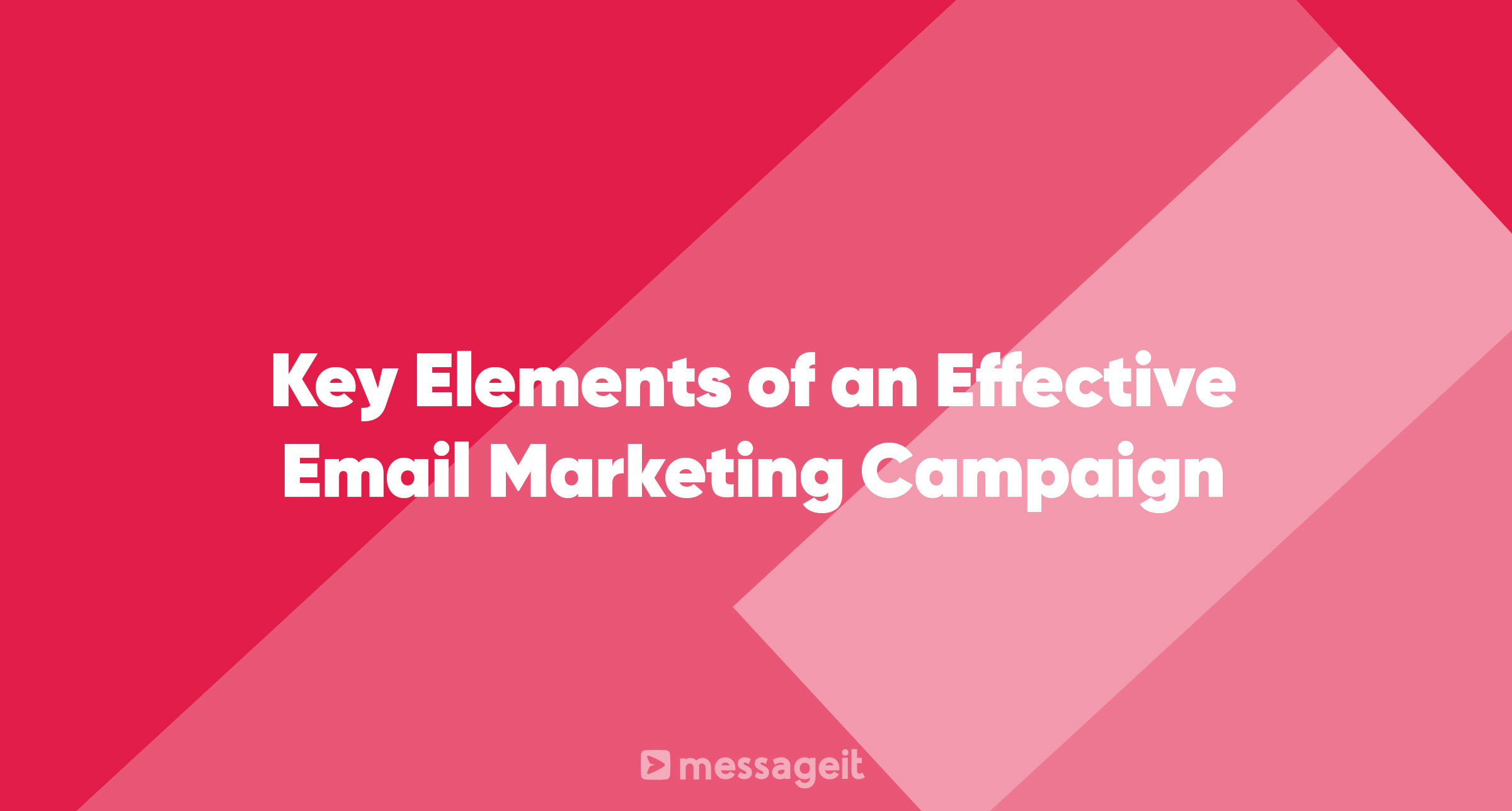Email marketing is a powerful tool for businesses to reach and engage with their audience. However, a successful email marketing campaign requires careful planning and the incorporation of key elements. In this article, we will explore the essential elements that make an email marketing campaign effective and drive results.
1. Clear and Compelling Subject Line
The subject line is the first thing recipients see in their inbox, and it plays a crucial role in getting them to open the email. A clear and compelling subject line should be concise, relevant, and intriguing. It should provide a preview of the email's content and entice the recipient to learn more.
2. Well-Defined Audience Segmentation
Segmenting your email list based on various criteria, such as demographics, purchase history, or engagement level, allows you to send targeted and relevant messages to different groups. Segmenting your audience ensures that each recipient receives content that aligns with their interests and needs.
3. Engaging Content
The heart of any email marketing campaign is its content. Create engaging and valuable content that resonates with your audience. Whether it's informative articles, product recommendations, or special offers, the content should be relevant and provide a benefit to the recipient.
4. Mobile-Friendly Design
Many recipients access their emails on mobile devices, so your emails should be optimized for mobile. Use a responsive design that adapts to different screen sizes, ensuring that the email content remains easy to read and interact with on smartphones and tablets.
5. Clear Call-to-Action (CTA)
Every email should have a clear and compelling call-to-action (CTA). The CTA guides recipients on what action to take next, whether it's making a purchase, signing up for a webinar, or downloading a resource. Use action-oriented language to motivate recipients to click the CTA.
6. Personalization
Personalization is a powerful way to connect with your audience. Use the recipient's name, offer tailored product recommendations, or send personalized content based on their previous interactions. Personalized emails often lead to higher engagement and conversion rates.
7. A/B Testing
A/B testing involves sending two or more versions of an email to different segments of your audience to determine which one performs better. Test different elements like subject lines, content, images, and CTAs to optimize your campaign for maximum effectiveness.
8. Monitoring and Analytics
Regularly monitor the performance of your email campaigns using analytics. Track metrics such as open rates, click-through rates, conversion rates, and unsubscribe rates. These insights will help you assess the effectiveness of your campaigns and make data-driven improvements.
9. Compliance with Regulations
Ensure your email campaigns comply with regulations, such as the CAN-SPAM Act in the United States or GDPR in Europe. This includes obtaining consent, providing an option to unsubscribe, and including a physical mailing address.
10. Automation and Personalized Sequences
Consider using email automation to send personalized sequences of emails based on recipient behavior. This can nurture leads, onboard new customers, or re-engage inactive subscribers.
Conclusion
Effective email marketing campaigns are built on a foundation of clear communication, audience segmentation, engaging content, and data-driven optimization. By incorporating these key elements into your email marketing strategy, you can create campaigns that resonate with your audience, drive results, and contribute to the success of your business.
